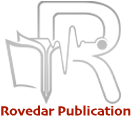Naniana N. Benu1, Piter Baun , Norci Beeh and Seprianus A. Nenotek
Corresponding author: Naniana N. Benu, Artha Wacana Christian University, Kupang, Indonesia. Email: nanibenu@ukaw.ac.id
Abstract:
Introduction: Cohesive devices are regarded as an important linking marker in organizing the sequence of the idea. The purpose of this study was to find out the cohesive English devices used by Indonesian EFL students in their writing. It also dealt with the factors affecting students’ writing ability with regard to English cohesive mastery. Methodology: Participants in the current study were 100 sixth-semester EFL students studying at universities in Kupang, Indonesia. The instruments used were fill-in-theblank tests and a sequence of pictures. The analysis of collected data revealed that the respondents were able to use references and conjunction in the fill-the-blank writing tasks. Results: It was found that substitution and ellipsis were considered difficult cohesive devices for students. The findings also confirmed that the respondents had problems using an ellipsis based on a sequence of pictures in their writing. The obtained results indicated that the Indonesian students favored using reference and conjunction cohesive devices. Various factors, such as a lack of teachers’ knowledge in introducing cohesive devices to students, can affect Indonesian learners’ use of cohesive devices. Conclusion: The results of this research provided a general understanding of cohesive devices in Indonesian EFL learners’ writing. This will help to identify students’ problems in using cohesive devices, such as overuse, underuse, or never use of certain cohesive devices. Teachers are suggested to introduce the devices, such as substitution and ellipsis, in writing class.
1.Introduction:
Grammar deals with two main components, morphology and syntax. Morphology deals with morphemes and words while syntax with phrases, clauses, and sentences. That is why talking about grammar always deals with how words are combined to form phrases form clauses, and clauses to form sentences. Richards and Schimit (2010) define grammar as a description of the structure of a language and the way through which linguistic units, such as words and phrases, are combined to produce sentences in the language. It usually takes into account the meanings and functions these sentences have in the overall system of the language. Similarly, Greenbaum and Nelson (2002) and Salkie (1995) believe that grammar is the study of how words are combined to form sentences. In addition, Patel and Jain (2008) state that grammar is a scientific statement of the principles of good usage concerning the relation of words in sentences. It means that studying grammar enables students to know how to construct meaningful sentences. Grammatical rules are applied both in spoken and written language. Different languages apply different grammar. Grammar provides ideas and understanding to make language comprehensible (Greenbaum & Nelson, 2002). The lack of students’ knowledge in grammatically constructing sentences is one of the biggest problems in EFL writing (Alisha et al., 2019; Benu, 2018; Lestari, 2020; Nenotek & Benu, 2022). Grammar is the main reason students struggle to produce good writing (Moses & Mohamad, 2019; Febriani, 2022).


